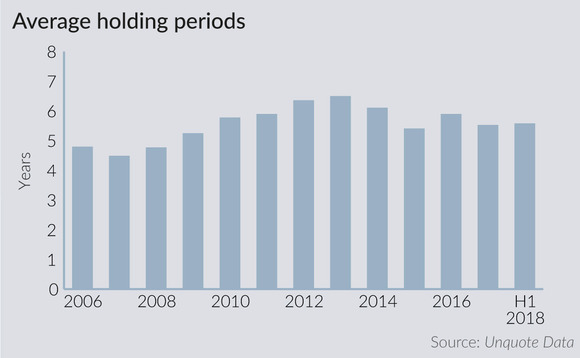
Single-asset funds afford slow and steady pace

When a fund approaches the end of its lifespan before the optimal exit window emerges for its remaining asset, transferring the single portfolio company into a new vehicle is proving increasingly popular. Denise Ko Genovese reports
"An increase in single-asset fund restructurings is another indication of the ever-maturing secondaries space," says Yaron Zafir, head of secondaries and transactions at Rede Partners in London. "We have worked on and seen many more of these deals over the past year."
Until recently, almost all solvent divestments of portfolio companies saw GPs selling to a trade buyer, another private equity sponsor, or, less frequently, via the public markets. However, recent years have seen the growing popularity of single asset fund restructurings, where a GP can maintain ownership of the company with the support of secondary capital. These strategies are becoming particularly popular in instances where there is mounting pressure to liquidate a fund, but there is still one company left in the vehicle.
Indeed, another secondaries adviser told Unquote in October that they were working on three to four single-asset fund restructures, which is a marked increase compared with a year ago. Yet Thomas Liaudet, a partner at secondaries adviser Campbell Lutyens, says the practise is still far from being embedded into the private equity landscape. "It is a developing segment of the market but still a very immature one, relative to LP deals or GP-led deals involving portfolios," he says. "Some buyers have never even touched single-asset secondaries and still won't. Some may have done one or two across the past few years, but very few have done more than that."
In this type of restructuring, the company in question is transferred to a new fund, usually created for the sole purpose of supporting that asset. The existing LPs are given the opportunity to roll over – either partially or fully – into the new vehicle. Those that do not wish to recommit can choose to cash out and new investors will be sought to take their place, thus providing the money to liquidate the previous fund. For a single-asset fund restructure to work, there has to be an equity rationale and credible reason for the company to be transferred across. Continuity can be one such reason: the GP stays at the helm, as does the management team of the business in most cases. "For a company with a good equity story," says Tarang Katira at Hamilton Lane, "it gives a GP a second bite of the apple; the ability to potentially realise some carry, or realign carry allocation across a team."
Accentuate the positives
Restructuring in private equity has typically had negative connotations, but in the case of a GP-led fund restructuring, this is no longer necessarily the case. Perceptions are very much correlated with the quality of the GP franchise, says Campbell's Liaudet.
PAI Partners portfolio company Perstorp is a case in point. In September, 13 years after its original investment, the GP transferred the Swedish chemicals business into a new fund managed by PAI (with new money from Landmark). Perstorp was the last remaining asset in the PAI Europe IV portfolio.
The case of Perstorp involved a business that had been through a difficult period, but was beginning to turn a corner, with ratings agency S&P upgrading it to B- in July this year. PAI had been required to step in and shore up the company on more than one occasion following the original buyout, with an equity injection in 2010, together with a recap of the hefty debt pile, as well as a further refinancing in 2012, according to Unquote sister publication Debtwire.
There can be other factors behind the decision to explore single-asset fund restructurings, as Rede's Zafir explains: "The structure is tailored and it can be managed on lower fees, making the economics attractive, but it all depends on the quality of the GP and the quality of the asset." However, for some companies a single-asset fund restructuring is not a viable alternative to a mainstream M&A process.
Campbell's Liaudet says it is not always the right time to sell a business, especially a cyclical one, so a single-asset restructure can be beneficial to investors. A one- or two-year extension is usually an option, but that may still be too little time to prepare the asset for a sale and secure the best price for it.
"Depending on the business plan, the holding time [of the asset in the new fund] is typically anywhere between three to seven years," says Zafir. The terms of the new vehicle usually stipulate a fund life of three to five years, with the option of two one-year extensions.

According to Unquote Data, average holding times for private-equity-backed companies are lengthening. The percentage of exits accounted for by investments held for more than seven years are now around 30% compared with 20% between 2006-2009. In addition, a much lower percentage of investments are exited within three years compared with 2006-2009.
"The 10-year fund model in private equity does not necessarily give enough time for all GPs to exit everything," says Mark McDonald, global head of private equity at DWS. "There has been a rise in funds exploring single-asset solutions for timing and also growth, together with additional capital in the market that is looking for creative options."
There is also an increasing number of managers setting out with the explicit intention of pursuing longer-term holding periods, such as Belgium-based Core Equity Holdings, which allows for an investment period lasting anywhere up to 15 years.
While longer holding periods are the most obvious driver behind the growing trend, the amount of dry powder in secondaries funds is also partly responsible. In the past 10 years, a total of €144.8bn has been raised for secondaries investing, €68bn of which was raised in the past two years, according to Unquote Data. And with so much money raised, single-asset fund restructurings are one way to put money to work. "From an LP's point of view, it gives optionality around either taking money off the table, or continuing to play for further upside with a trusted GP who knows the asset intimately," says Hamilton's Katira. "From the perspective of a secondary buyer, it is one way to put money to work. For secondary funds that like these deals, it diversifies their exposure." Katira adds that there is potentially more upside in these single assets compared with traditional secondaries. However, the cash payback periods tend to be longer.
Loss of sensitivity
Although a typical secondaries purchase is diversified within a multi-asset portfolio, most agree that you can mitigate the concentration by buying several single assets. "Secondary investors are now less sensitive to concentration than in the past," says Rede's Zafir. "There used to be meaningful discounts because of this sensitivity, but this has changed."
For secondaries buyers, a single-asset fund is often easier to analyse than a multi-asset fund, while offering the promise of a more rapid liquidation and a higher internal rate of return, says Matthew Drean, global head of secondaries at Triago. And for LPs that elect to sell, these deals can also be attractive, even at significant discounts. This, he says, is because sellers are usually more willing to sell one asset at a discount than a raft of assets, since the remaining asset represents a relatively small portion of overall fund commitments.
The process is typically run by a broker who will sound out potential parties and set a market clearing price, which will be the price for all who participate in the new fund, says Katira: "It is important to think about the market clearing price that is set because, for a buyer, the price paid determines your return. With debt readily available at the SPV level, two buyers can have two very different returns on the same asset."
Another recent example is TDR's single-asset restructure of Stonegate Pubs. The remaining asset in TDR Capital II's €2.1bn vehicle was set to be moved into a new vehicle managed by the same GP and with fresh capital from secondaries investors, according to recent press reports. Stonegate shelved plans for a £1bn flotation in 2016 following the Brexit vote and subsequently came to market to explore options in 2017.
"A single-asset restructure may be a better solution than just continually extending the life of a fund, as it gives LPs the option to take the decision that suits their own strategy," says DWS's McDonald. "And, often, LPs may not all be aligned to the same objectives by year-10 of a fund."
Not only are these single-asset restructurings becoming popular because assets are taking longer to sell, resulting in a build-up of such options, but there is an increased openness of buyers and GPs to pursue these types of deals. "Previously, there was some reticence on the secondaries buy-side, as single assets were anathema to a diversified private equity strategy," says McDonald. "This has changed, given an upgrade in buy-side skill-sets, as well as a more open-minded approach on behalf of both GPs and their investors. It also may make sense for the company to remain with the same owner for the next several years to ensure stability."
"There is an increasing trend towards what was once considered more esoteric," says McDonald. "Single-asset fund restructurings have not been that common over the past five years, but the past 18 months has seen an increase due to a more creative approach across the market, twinned with a wave of funds raised between 2006-2008 coming to the end of their natural life. It is also the natural next step in the rise of interest in GP-led deals."
Evolution
With the abundance of capital raised, debt readily available to make these purchases, and increased sophistication of secondaries players, the single-asset opportunity seems here to stay.
"The overwhelming majority of these [single-asset] deals would have been done as direct secondaries a decade ago [involving] the sale of the fund's underlying asset to a new owner," says Triago's Drean. "But these neither permit existing investors, nor the fund manager, to participate in the potential upside. We expect to see more single-asset restructuring deals. The logic can be highly compelling for all parties involved: the existing LP, the existing fund manager and the buyers."
"Some secondary buyers are changing their approach and are now looking at single assets as part of their portfolio construction," says Campbell's Liaudet. "It is a new approach to managing diversification, and more likely to allow them to consider single-asset secondaries. In a down market scenario, where M&A and IPO exits become more challenging, the single-asset secondary trade could become more attractive to GPs and their LPs."
A structural issue?
European buyout fund managers held final closes for 283 funds between 2006-2008, securing aggregate commitments of more than €385bn. Most of these were structured as 10-year vehicles, with one- or two-year optional extension periods.
At a recent industry event, Julian Mash of Vision Capital told an audience that he sees this as the problem, arguing that the classic private equity fund model was originally designed for venture capital in the 1990s and had been shown not to be fit for purpose in private equity. "One [problem] is arbitrary timetables, and the other is how incentives work," said Mash. "If a private wealth manager came to you and said these stocks are great but we are selling them, you would wonder why. The classic private equity fund model forces us – not Vision, but others – to sell things after a while."
Mash sees the current trend of innovation and specialisation in the secondary market as a solution to this problem. "Continuation, extensions and refreshment of capital are all ways of addressing this timetable constraint," he said. "It is incredibly rational and more will be done. It is just a shame that it is solving a problem that might have been structured out in the first place."
Most of the high-profile GP-led transactions completed so far this year have been around vehicles from 2008 and earlier, including Nordic Capital VII (nine assets), PAI Europe IV (single-asset), Doughty Hanson & Co Fund IV (two assets), PineBridge New Europe Partners II (four assets) and Alantra Private Equity Fund II (three assets).
However, 2009 funds have also begun exploring processes. Charterhouse Capital Partners has started talks about a restructuring for the €4bn Charterhouse Capital Partners IX, according to press reports in October. The vehicle has five portfolio companies remaining, according to Unquote Data: Bartec, Skillsoft, Nuova Castelli, Mirion Technologies and Comexposium.
Fundraising for European buyout firms steeply declined in 2009, but 52 funds still managed to hold final closes for almost €46bn, according to Unquote Data. Given the overlap in investment periods, many of these funds will be affected by the same dynamics that make 2006-2008 funds candidates for GP-led restructurings.
Latest News
Stonehage Fleming raises USD 130m for largest fund to date, eyes 2024 programme
Sponsor acquired the public software group in July 2017 via the same-year vintage Partners Group Global Value 2017
Stonehage Fleming raises USD 130m for largest fund to date, eyes 2024 programme
Czech Republic-headquartered family office is targeting DACH and CEE region deals
Stonehage Fleming raises USD 130m for largest fund to date, eyes 2024 programme
Ex-Rocket Internet leader Bettina Curtze joins Swiss VC firm as partner and CFO
Stonehage Fleming raises USD 130m for largest fund to date, eyes 2024 programme
Estonia-registered VC could bolster LP base with fresh capital from funds-of-funds or pension funds









